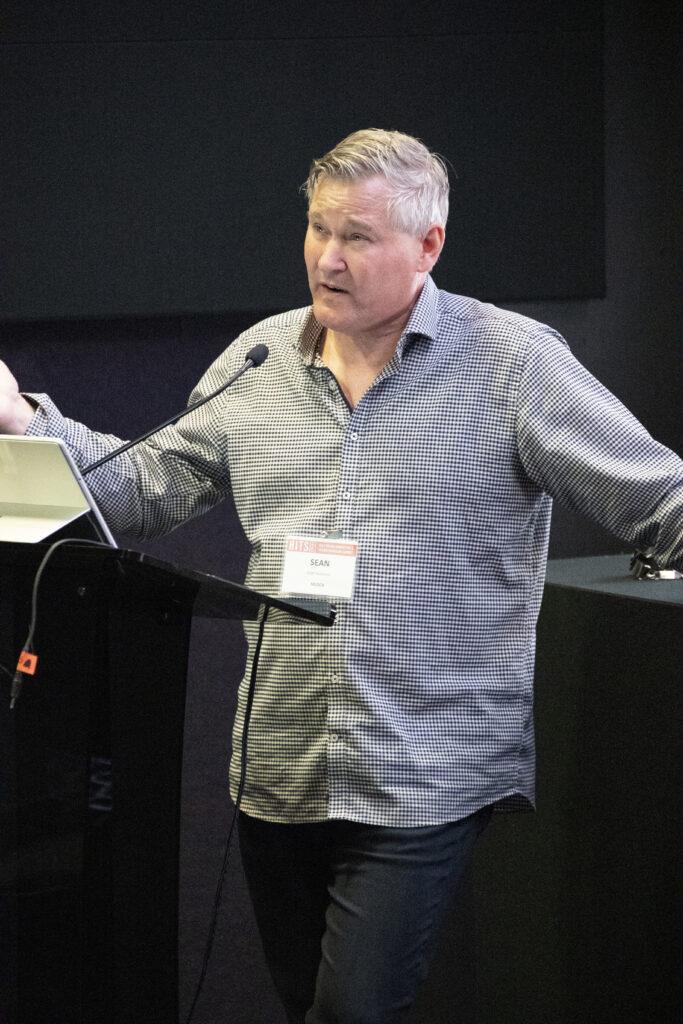M+E Connections

HITS 2023: Tech, Data Center Infrastructure are Evolving to Enable the Global Supply Chain
Story Highlights
Significant advances are occurring within the infrastructure of traditional production and distribution, according to industry experts who spoke May 23 at the Hollywood Innovation and Transformation Summit (HITS) at The Culver Theater, during the panel session “Infrastructure Transformation: You’re Going to Need a Bigger Boat.”
Those advances are being driven by the popularity of VFX-heavy theatrical and episodic content, increased competition for consumer media spending in media and entertainment and the impact of virtualisation during the pandemic.
The panellists discussed the way overall technology and data centre infrastructure is evolving (and required) to enable the entire global supply chain of content creation and distribution: from the “Connected Stage” (coined to highlight the emerging connectivity needed for successful virtual production) to the state-of-the-art interconnectivity for hybrid and multi-cloud resources that is transforming to meet the needs for rapid and agile support of time-sensitive workflows, fluid collaboration, and heavy data motion.
“We’re talking about kind of the state of the industry, where we’re at at this point” during the session, moderator Sean Tajkowski, technical director of the Media & Entertainment Data Center Alliance (MEDCA), said as it got underway.
 “We’ve got some great guests in regards to that around sustainability, hyper-scale, [co-location], edge, the hybrid customer experience, the data ecosystem, how we’re using data throughout the industry,” he told attendees. “And that’s not only in big data but also specific to media and entertainment.”
“We’ve got some great guests in regards to that around sustainability, hyper-scale, [co-location], edge, the hybrid customer experience, the data ecosystem, how we’re using data throughout the industry,” he told attendees. “And that’s not only in big data but also specific to media and entertainment.”
There is “also the customer’s responsibility to getting to the cloud,” which is “something MEDCA is real interested in, in merging some of the groups … [and] helping around infrastructure, building infrastructure and how much that’s a part of the ecosystem of data.”
He pointed out that “we keep thinking in terms of application layer and we keep forgetting about our involvement with infrastructure and what’s needed there to support all those applications, so we’re going to cover quite a bit of material today. ”
He added: “I thought I’d put together this diverse crowd because the panellists represent IT, consultation, service provider and supplier…. MEDCA was started really to be a convergence between big data and tech and the media and entertainment industry, [which,] about 15 years ago, stepped into big data. And it’s interesting the correlation there and the education there and how that’s taken place.”
Tajkowski “thought it very important to not only educate media and entertainment in the big data space but also to educate big data on entertainment and media,” he said.
“Manny, do you have anything to say to that?” Tajkowski asked Manny Aguilar, business development executive at data and records management company Iron Mountain. “Because big data is very much different. The banking and all those types of things. Very different from media and entertainment, correct?”
“Yes, correct,” Aguilar responded, adding: “When you think of big data, when you mention financial or healthcare, you look at different compliances…. So everything’s based around being compliant. I think media is more about the consumer is now spoiled.”
Aguilar told attendees that’s because consumers are “looking at prerecorded content but also live streaming [and] everything is based around the hub of a data centre, where it’s very robust with networks. And so, in order to deliver this content to the consumer, to keep their attention, the latency is very important.” Therefore, it comes down to “what’s your speed and what’s your capacity as far as delivering this content,” he said.
He added: “If you look at research being done,” it is expected that, “by the year 2025 [there are] supposed to be 20-plus million devices” owned by consumers, “whether it’s mobile laptops, where everybody’s streaming and when you’re talking two, three seconds of delay you’re losing their attention and they start to move on to the next application or the next media provider.”
Interjecting, Chrissy Olsen, senior manager of strategic accounts at supply chain, electrical and distribution services company Wesco, pointed out: “Nobody likes buffering.”
Regarding infrastructure, Olsen, appearing virtually, said: “I agree with everything that’s been said. The infrastructure is the backbone of everything we do. It’s the backbone of the network. It’s the backbone between the buildings that are running the data centre. So it’s super important. Fibre is really the key. It’s becoming a lot more cost effective than copper, which is what media and entertainment has always used from a broadcast background. And so big data, hyper-scales, etc. are using fibre in the data centre to connect campuses to run all the devices. It is more reliable. It can go further distances. And so we’re seeing really everything from the network to the users of bring your own device is being driven by a fibre network.”
Noting that there’s “a lot of collaboration” and “acquisition that’s happening” within the space, Tajkowski asked Derek Powell, director at telecom, media and telecom strategy consulting firm Altman Solon, what the adoption rate is now like and whether there had been “a lot of discussion around technology within the stage, not just in the CPUs and not just within the application,” but whether we’re “building smart stages today and are they accepting that that is a big part of going forward.”
 Powell responded: “When we think about this, we think from an infrastructure perspective, there’s three different trends that we’re watching very closely that drives the adoption of these various architectures. One is how fast are we seeing the transition from SDI to IP. That’s really big because a lot of operators are constrained budget-wise [and there are] reliability issues with the network, which we hope that transport protocols … will help solve.”
Powell responded: “When we think about this, we think from an infrastructure perspective, there’s three different trends that we’re watching very closely that drives the adoption of these various architectures. One is how fast are we seeing the transition from SDI to IP. That’s really big because a lot of operators are constrained budget-wise [and there are] reliability issues with the network, which we hope that transport protocols … will help solve.”
He added: “I think the second part of the challenge that we see with adoption is really around this rise of remote collaboration. . . . I think the third piece that drives adoption is … reducing latency. That’s always going to be a continual challenge and focus for a lot of operators, particularly moving a lot of information and data across a wide geographic area.
Also among the panelists was Nader Balady, account executive at GPL Technologies, which designs information technology (IT) solutions and data infrastructures for post-production facilities, VFX shops, feature film studios and game development houses globally.
The Hollywood Innovation and Transformation Summit event was produced by MESA in association with the Hollywood IT Society (HITS) and presented by Amazon Studios Technology, with sponsorship by Fortinet, Genpact, Prime Focus Technologies, Signiant, Softtek, Convergent, Gracenote, Altman Solon, AppTek, Ascendion, CoreSite, EPAM, MicroStrategy, Veritone, CDSA, EIDR and PDG Consulting.









